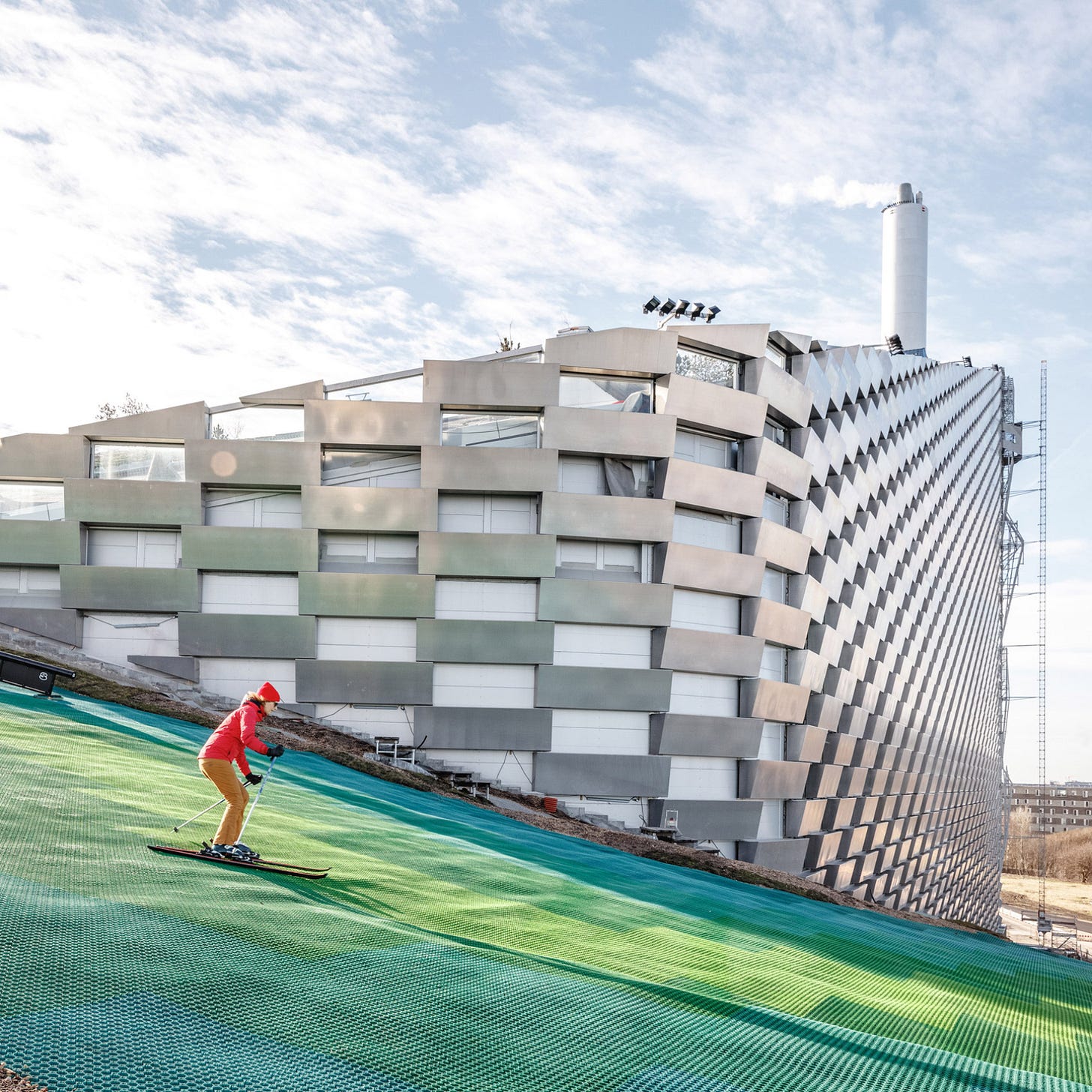How corporate power nixed Copenhagen’s goal to become carbon neutral
There's something rotten in Denmark, and it is keeping the Danes from achieving their sustainability goals
Copenhagen
Two Scandinavian researchers examined how Copenhagen, a city envisioned as leading the entire world toward sustainability, built a polluting waste-to-energy plant that upends the city’s goal of being carbon neutral by 2025. It is a story of corporate power, insider influence, and mendacity.
The researchers, Ulrik Kohl and John Andersen, followed the eight-year process—from initial proposal to completed waste conversion facility—of the Copenhill waste-to-energy plant in Denmark. They used techniques akin to investigative journalism, interviewing the interested parties, scouring through official meeting minutes and news articles, and filing Freedom of Information requests. Their findings were published in the journal Urban Planning in September 2022.
In 2008, the energy company Amager Resource Centre (ARC) began planning for the replacement of an existing waste-to energy plant in Copenhagen. Waste-to-energy (WTE) is a pretty simple concept: a municipality or company takes all the garbage that would wind up in landfill—food waste, grass clippings, paper, even metal, glass and plastic—and burns it. The heat from the burning waste is used to power turbines for electricity. WTE can be a very green thing to do. All the garbage that would otherwise wind up in landfill, creating groundwater problems and leaking methane, replaces fossil fuels to create energy. Less landfill, cleaner water, and less greenhouse gas, adds up to a big win for the environment.
There is a problem, however, when WTE plants burn plastic. As plastic is made from fossil fuels, it releases greenhouse gasses when burned. Copenhagen’s energy needs already included the existing WTE plant, from which plastic waste was removed before burning. Because of this existing plant, an environmental coalition wanted to keep the WTE incineration program as it had been: small and local. Burning local waste would emit only one-third of the CO2 of the proposed Copenhill plant. For it to be fully operational, the proposed plant would need to import waste from other European cities, and that waste would include plastic. The environmental coalition included the Technical Environmental Administration (TEA), environmental nonprofits, and Denmark’s Environmental and Energy Ministries.
In 2011, TEA reviewed the plans for Copenhill for several months and recommended scrapping the project. Besides increasing carbon emissions, building the new plant could jeopardize the city’s finances. Copenhagen’s city council subsequently rejected the plan.
In the world we all may have envisioned in our high school civics classes, that would have been the end of it. People with expertise examine a proposal, and their recommendation is voted on by representatives elected by the people: the best workings of democracy. But it seems that ARC was willing to have a longer game plan.
ARC found ways to make the megaplant appealing to politicians and the public. In their words, the project would put Copenhagen “on the map.” One selling point was to incorporate a ski slope on the facility’s roof. Like a headline from The Onion, part of the project’s “fun” design would have included smokestacks that would emit their pollution as smoke rings. (I kid you not.) The architectural firm involved in the project, Bjarke Ingels Group (BIG) describes these designs and their architectural philosophy as “hedonistic sustainability” as opposed to the “’sad and depressing’ sustainability in which people make sacrifices.

”
Through further analysis, TEA found that the existing plant would continue to work just fine, and increased sorting and recycling were bringing down the overall levels of waste. Projecting into the future, they estimated that Copenhagen would not generate enough waste to justify building the new larger plant. Countering, ARC offered another report that obviously justified the Copenhill plant. Reaching out, TEA scheduled a workshop among the interested parties, but ARC boycotted the event.
It’s at this point that the process enters the “behind closed doors” phase (if it hadn’t already), in which ARC had meetings with the lord mayor and other key local politicians. This culminated in 2012 in what was called the “Mayors’ Deal,” a “compromise” that allowed the plant to go forward with the promise that it would operate pretty much in accordance with TEA’s recommended sustainability guidelines. But in 2016, when the plant was about to be launched, the lord mayor announced that Copenhill would go fully operational, including the importation of waste to burn in the plant, and thus harpooning the city’s plans to go carbon neutral.
Kohl and Andersen also unearthed secret backchannels, such as ARC’s writing Denmark’s Finance Minister, Bjarne Corydon, in 2012, claiming “serious consequences” for Danish green technology export and the loss of jobs equaling 4,600 years of work, unless Corydon could convince Copenhagen’s city council to support the project.
Corydon, along with Denmark’s Environment Minister sent a letter of support for the project to the CEO of V0lund, a subsidiary of the U.S.-based conglomerate Babcock & Wilcox, and a machine provider involved in the project. When journalists asked the Environment Minister as to why she changed her mind, she refused to comment. Four years later, however, she posted on Facebook that she had been “bullied” into signing the letter.
The thing that I found interesting about this political/environmental saga was the lack of corruption. Big business got its way, to the detriment of democracy and the environment, but there was no indication of dirty politics, things like bribes and large campaign contributions. Also, there was no indication that Copenhill had a business media ally, such as the Danish version of Fox News. It was simply a corporate power knowing how to use that power.
Andersen and Kohl advise environmentalist and community organizers that they need to play a larger and longer game, saying:
Lack of transparency in planning and decision-making processes should be communicated to the public and other green stakeholders. Expert knowledge must be combined with other forms of knowledge, especially political knowledge. It is also important to argue convincingly for the advantages of alternative plans. If green actors in the Copenhill case had better developed and communicated proposals linked to job creation—e.g. recycling initiatives, community engagement, and a broader socio-economic agenda—they might have been able to attract important new coalition partners from trade unions, the private sector, and the public.
In the meantime, Copenhill has been completed. While it billows large amounts of CO2 from burning plastic waste, it is still touted as a green success. At one point, a laser show was added to the smoke ring plans. Ultimately, the lasers and smoke rings did not make it into the final design, but a climbing wall, the largest in the world, and other recreational features were added to the plant’s ski slope. Copenhagen will not meet its climate goals, but Danes will be having a fun time.





